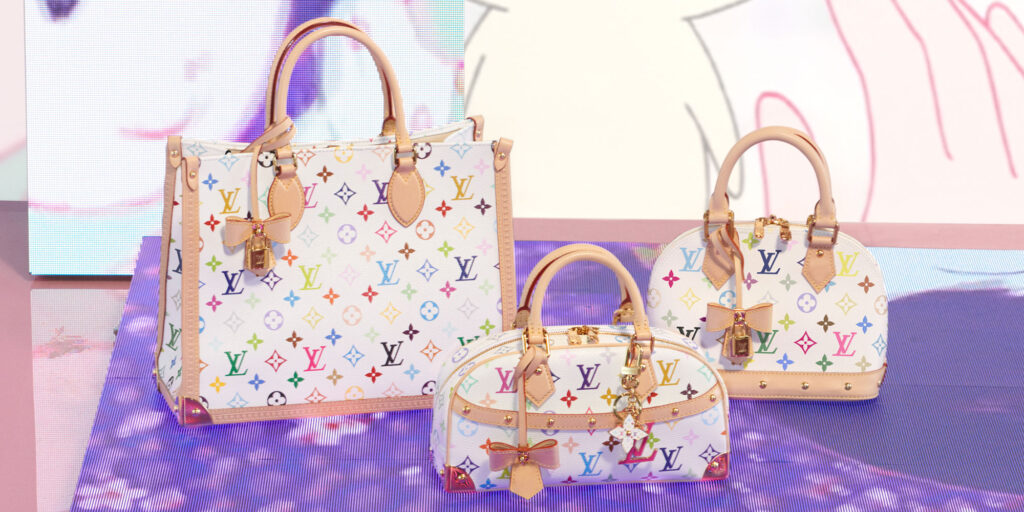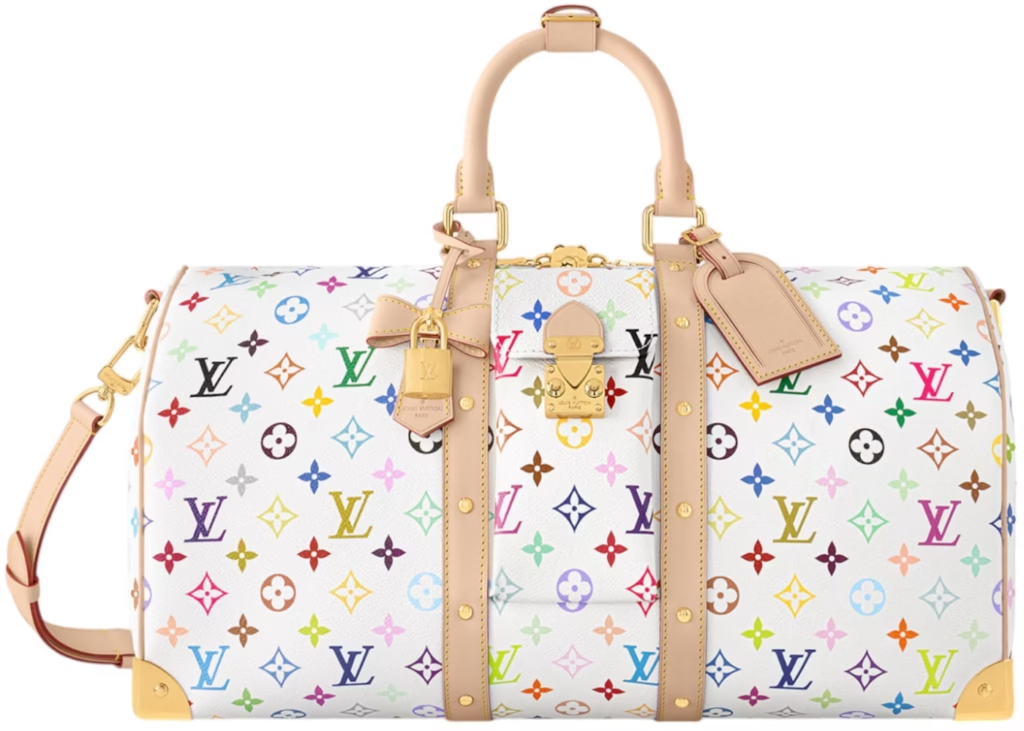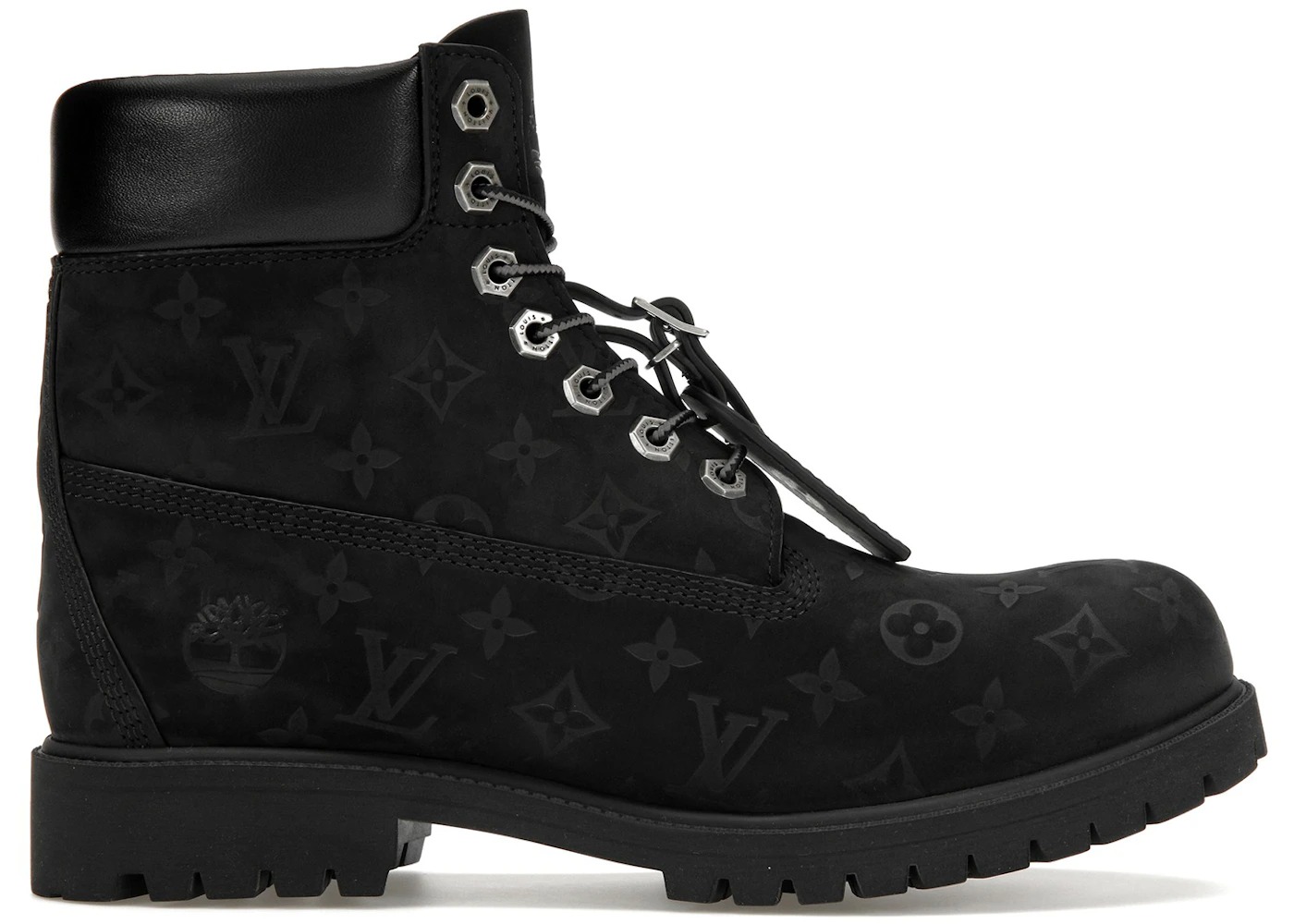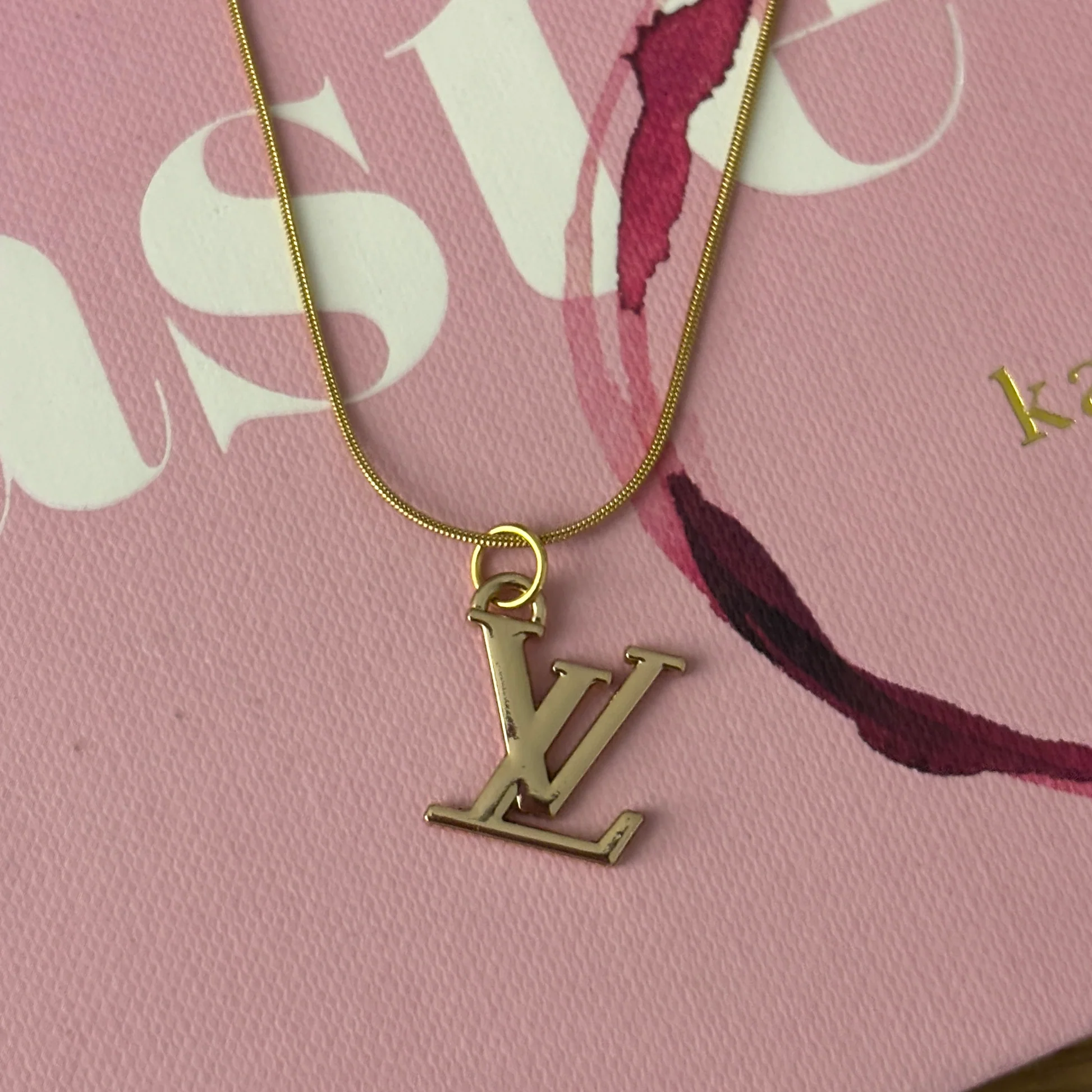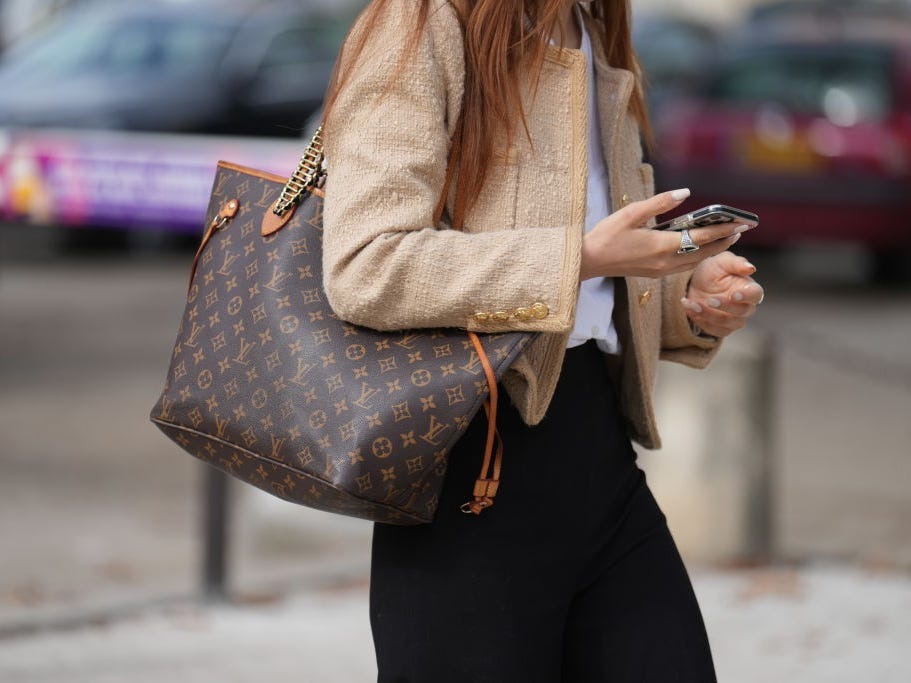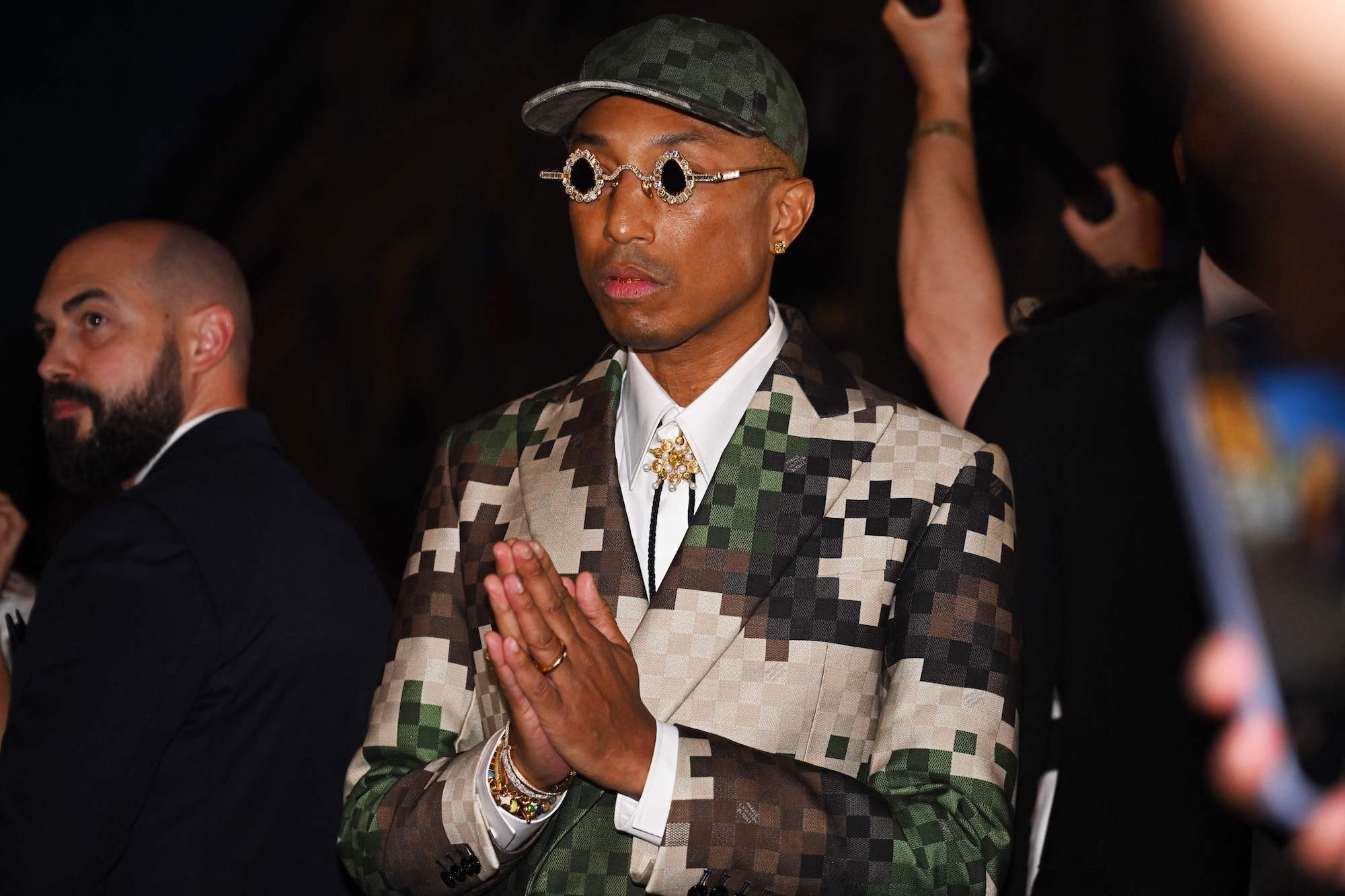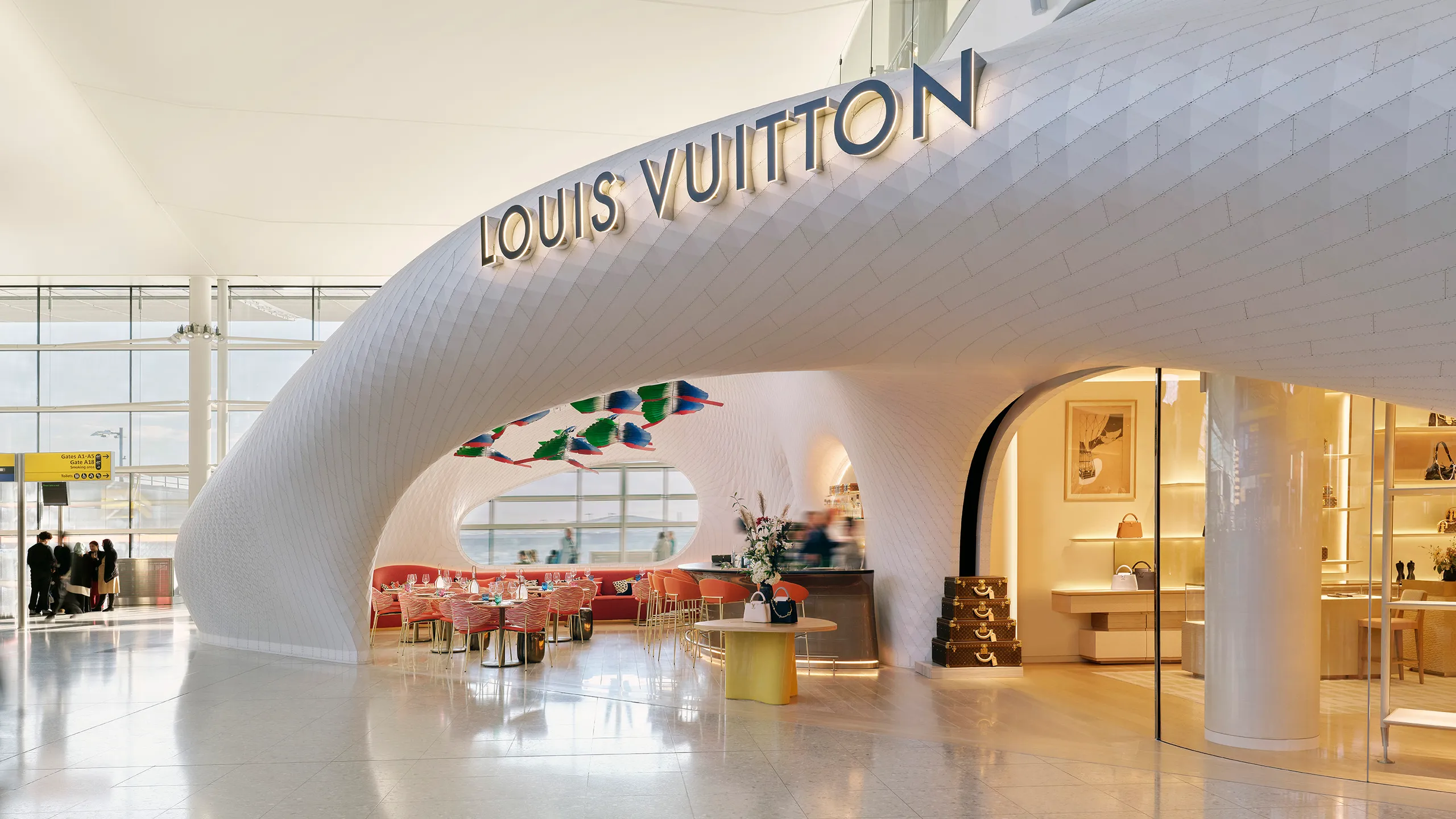Louis Vuitton Murakami – When Louis Vuitton partnered with Japanese contemporary artist Takashi Murakami, the fashion world witnessed a groundbreaking fusion of luxury craftsmanship and avant-garde pop art.
The collaboration, which began in 2003 under the direction of Marc Jacobs, redefined the way fashion houses approached artistic partnerships, paving the way for future collaborations between luxury brands and contemporary artists.
The Louis Vuitton x Murakami collection was vibrant, playful, and culturally disruptive, infusing LV’s classic Monogram canvas with a colorful, manga-inspired twist that captivated audiences worldwide.
This article explores the origins, evolution, and impact of the Murakami collaboration with Louis Vuitton, and why it remains one of the most influential moments in fashion history.
The Vision Behind the Collaboration
In the early 2000s, Marc Jacobs, then Creative Director of Louis Vuitton, sought to inject new life into the storied brand by embracing contemporary art.
Enter Takashi Murakami, an artist known for blending Japanese anime, commercial culture, and traditional artistic technique into a new aesthetic movement called “Superflat.”
Jacobs admired Murakami’s bold use of color and pop imagery and believed his style would resonate with younger consumers while challenging traditional notions of luxury.
The result was a collaboration that defied conventions—a synergy of fine art and fashion that merged Murakami’s vibrant world with Louis Vuitton’s legacy of elegance.
The Birth of the Multicolore Monogram
Louis Vuitton Murakami – Perhaps the most iconic result of the collaboration was the Multicolore Monogram.
First launched in 2003, the pattern reimagined the traditional Louis Vuitton Monogram with 33 bright colors set against black or white backgrounds.
It was a radical departure from the classic brown Monogram canvas.
This collection included a wide range of handbags, wallets, keychains, accessories, and luggage, many featuring gold hardware, bright leather trims, and playful accents such as cherries, cartoon eyes, and blossoms. Notable bags included:
- Speedy 30 Multicolore
- Alma BB Multicolore
- Pochette Accessoires
- Keepall 45 Multicolore
- Petite Noé
The Multicolore line instantly became a hit, embraced by celebrities like Paris Hilton, Jessica Simpson, and Beyoncé, and was heavily featured in pop culture throughout the 2000s.
Expanding the Artistic Universe: Other Murakami Designs
Louis Vuitton Murakami – The Louis Vuitton x Murakami collaboration wasn’t limited to the Multicolore Monogram.
Over the years, Murakami introduced several limited-edition designs that added depth and variety to the partnership:
- Cherry Blossoms (2003)
Murakami adorned classic Louis Vuitton bags with pink smiling cherry blossoms—an homage to both Japanese culture and whimsical art.
The bags often featured red leather accents and came in Monogram canvas with blossom overlays.
- Cerises (2005)
The Cerises line introduced adorable cartoon cherries with eyes and expressions, placed atop classic Monogram canvas.
This playful motif gave bags like the Speedy and Keepall a lighthearted, pop-art sensibility.
- Monogramouflage (2008)
In a more experimental turn, Murakami designed the Monogramouflage line, blending camouflage patterns with the Louis Vuitton Monogram.
This line appealed to a bolder, edgier audience and showcased the versatility of both Murakami’s and LV’s creative range.
- Cosmic Blossom (2010)
One of the final lines in the collaboration, Cosmic Blossom, featured flower motifs in bold primary colors on bags and apparel.
It reflected Murakami’s continual push to merge fashion and joyful, eye-catching visuals.
Cultural and Commercial Impact
The Louis Vuitton x Murakami collaboration was revolutionary in multiple dimensions:
- Commercial Success: The Multicolore Monogram became one of LV’s best-selling collections for over a decade, driving significant revenue and brand awareness.
- Pop Culture Ubiquity: Murakami’s bags appeared in films, music videos, and tabloid photos, symbolizing youthful luxury and playful chic.
- Influencing Future Collaborations: The project set the stage for later high-profile partnerships, such as Louis Vuitton’s work with Yayoi Kusama, Stephen Sprouse, Jeff Koons, and most recently, Pharrell Williams.
This collaboration also blurred the line between fashion and art, legitimizing the idea that accessories and luxury goods could also be seen—and collected—as works of contemporary art.
The End of an Era
Louis Vuitton Murakami – In 2015, shortly after Nicolas Ghesquière took over as creative director, Louis Vuitton officially ended its collaboration with Takashi Murakami.
The decision was a symbolic turning point as the brand moved toward a more subdued, heritage-driven image.
The Multicolore line was discontinued, and remaining items became increasingly rare and sought after in the resale and vintage markets.
Today, bags from the Murakami era are considered collectible treasures, with prices on resale platforms often exceeding their original retail value.
Resurgence in Popularity and Vintage Appeal
Louis Vuitton Murakami – In recent years, there has been a resurgence in Y2K fashion, prompting renewed interest in the Louis Vuitton x Murakami collections.
Vintage enthusiasts, fashion bloggers, and even Gen Z influencers have embraced the collaboration as part of a wider nostalgia-driven movement.
Celebrities such as Kylie Jenner, Doja Cat, and Dua Lipa have been spotted with vintage Murakami pieces, contributing to the revival.
As a result, the bags now symbolize not just artistic genius but also cultural legacy and fashion-forward taste.
Why the Collaboration Still Matters
Louis Vuitton Murakami – The legacy of Louis Vuitton x Takashi Murakami is enduring for several key reasons:
- Innovative Creativity: It broke barriers between high art and commercial design.
- Fashion Democratization: Murakami’s playful visuals made luxury feel more accessible and relatable to younger audiences.
- Longevity: Even a decade after its conclusion, the collaboration’s influence on art, fashion, and pop culture is still felt.
- Collectible Value: Murakami LV pieces are now considered both investment items and cultural artifacts.
Conclusion
Louis Vuitton Murakami – The Louis Vuitton x Takashi Murakami collaboration was more than a marketing strategy—it was a creative milestone that reshaped the possibilities of fashion.
It challenged traditional notions of luxury by injecting joy, humor, and color into a historically conservative brand, and it opened the door for future collaborations between global fashion houses and contemporary artists.
Even though the partnership ended in 2015, its impact is still visible in today’s fashion landscape.
Murakami’s joyful, vibrant vision and Louis Vuitton’s timeless craftsmanship proved to be a perfect match—a creative union that still inspires designers, artists, and collectors worldwide.
For fashion lovers and art enthusiasts alike, the Murakami Louis Vuitton collection remains an unforgettable chapter in the story of 21st-century style.


